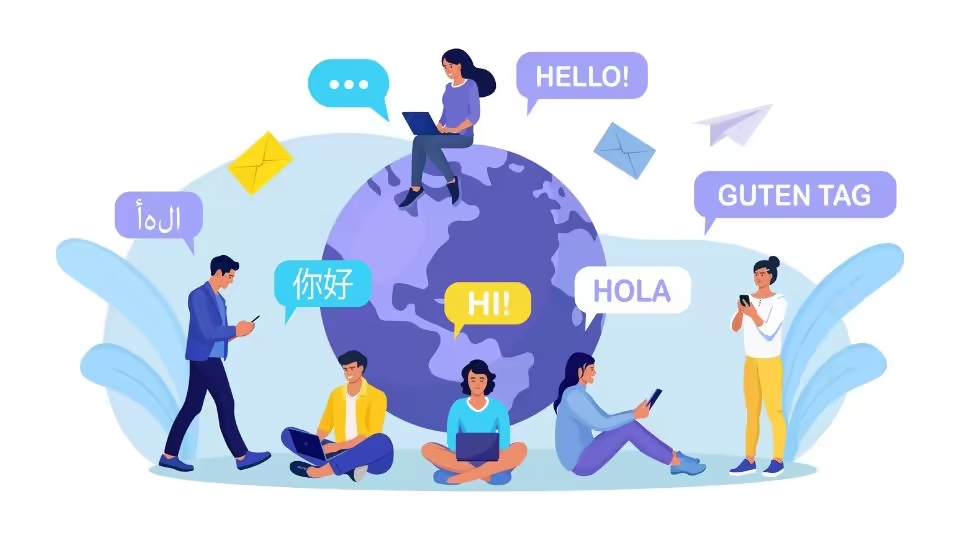In today’s interconnected global economy, businesses are expanding beyond borders at an unprecedented rate.
As companies strive to connect with diverse audiences and navigate international markets, clear communication becomes a vital component of success. However, language barriers can hinder progress, leading to misunderstandings, inefficiencies, and missed opportunities.
Multilingual translation software is changing the way businesses approach these challenges. Implementing the right solutions allows organizations to eliminate communication obstacles, boost productivity, and foster stronger international partnerships.
Read on to discover how these tools can help your business thrive in a multilingual world.
Improving Efficiency in Global Operations
Managing multilingual communication can significantly slow down business processes. Streamlining these processes ensures tasks are completed faster and with greater efficiency.
To enhance global efficiency, consider the following strategies:
Task automation
Automating routine translation tasks can save significant time and resources. Tools like Microsoft Translator allow you to automatically translate documents, emails, and reports, eliminating the need for manual translation for routine communication. This integration into existing workflows helps streamline operations, freeing up valuable time for more strategic tasks while ensuring that all translated content is accurate and efficient.
Real-time communication tools
Real-time translation tools are crucial for maintaining seamless communication across language barriers, especially in international meetings or discussions. With real-time translation capabilities, tools like Google Translate or other AI-driven software can instantly translate spoken or written language during interactions, allowing teams to collaborate effectively without delays or misunderstandings.
Standardized terminology usage
Maintaining consistency across translations is vital, particularly in industries like legal or technical fields, where precise language is crucial. Machine translation engines equipped with glossaries and terminology management features ensure that the same terms are translated consistently across different documents.
Using language translation software allows your business to operate seamlessly across borders, improving productivity and minimizing delays caused by language differences.
Breaking Language Barriers for Better Collaboration
Clear communication is essential for effective teamwork, especially in multilingual environments. Addressing language differences helps foster stronger collaboration among diverse teams.
Here are practical ways to overcome language barriers and enhance collaboration:
Inclusive communication tools
AI-powered translation tools enable all team members, regardless of their language, to communicate effectively. These tools allow employees to express their thoughts in their preferred language, promoting inclusivity and ensuring that everyone’s voice is heard. This leads to better collaboration, reduces misunderstandings, and helps foster a positive, diverse work environment.
Localized team training
Providing multilingual training materials ensures that your global workforce can easily access the same information, regardless of location. Localized content, such as translated manuals or instructional videos, ensures that all employees receive consistent onboarding and professional development.
Real-time collaborative platforms
Real-time translation features in collaborative platforms support seamless communication during virtual meetings and group discussions. These platforms instantly translate messages or spoken words, making it easier for teams from different linguistic backgrounds to collaborate on projects.
Simplifying multilingual communication empowers your teams to collaborate more effectively and fosters a more unified work environment.
Reaching International Audiences Effectively
Expanding into global markets requires clear, localized communication that resonates with diverse customer bases. Multilingual translation software ensures your business can engage with international audiences efficiently and professionally.
To effectively connect with customers in various regions, consider the following:
Localized marketing
Adjust your marketing materials to reflect local customs, preferences, and cultural nuances. This helps establish a stronger connection with audiences by showing that your business understands and respects their culture. Localization goes beyond translating words—it involves adapting imagery, tone, and messaging to suit regional expectations. These efforts help you level up your business in competitive international markets.
Accessible content
Make your website, mobile apps, and essential documents available in your customers' native languages. Doing this removes language barriers, broadens your reach, and creates an inclusive experience for international users. Tools designed for website translation can handle this process efficiently, ensuring consistency and professionalism.
Consistency across channels
Use translation management systems to align your messaging across all platforms, including emails, social media, and advertisements. Consistency reinforces your brand identity and builds trust, as customers will recognize familiar and accurate communication regardless of where they interact with your business.
Tailoring your communication to international audiences allows your business to create meaningful connections and extend its global reach effectively.
Reducing Costs and Maximizing ROI
Managing translation needs efficiently can significantly lower expenses and improve profitability. Multilingual translation software provides scalable, cost-effective solutions that maintain high-quality results.
To achieve cost savings and maximize ROI, consider the following strategies:
Cost savings through automation
Automate repetitive language tasks such as translating emails, product descriptions, or support documents. This minimizes the need for costly human translators in routine activities, freeing up resources for more critical tasks. Translation software also reduces turnaround times, adding further efficiency.
Scalable solutions for growth
Translation platforms like Microsoft Translator offer flexible options that can grow with your business. As you expand into new markets, these tools allow you to scale operations affordably without increasing the burden on your existing workforce or budget.
Tailored translations on demand
Machine translation technologies can be customized to fit your industry’s terminology and specific needs. Over time, these systems improve in accuracy and relevance, delivering high-quality translations whenever required without incurring additional service costs.
Efficient translation tools enable businesses to manage resources wisely, cut unnecessary expenses, and increase their overall return on investment.
Enhancing Customer Experience and Brand Image
Effective communication plays a pivotal role in shaping customer experiences and bolstering a brand’s image. Multilingual translation software helps your business cater to diverse linguistic and cultural needs, ultimately building stronger relationships with global customers.
The following strategies can help enhance customer experience and reinforce your brand’s reputation:
Cultural sensitivity in communication
Ensure your translations account for local customs and cultural nuances. This approach not only prevents misunderstandings but also shows customers that you respect and understand their cultural context. Tailoring content in this way fosters trust and loyalty.
Seamless user experience across platforms
Offer multilingual interfaces in your mobile apps and websites, creating a user-friendly experience for a global audience. A smooth, language-friendly experience reduces frustration and keeps customers engaged longer, improving overall satisfaction.
Reliable customer support
Provide multilingual support through translation tools like Google Translate. These tools help ensure that customer inquiries are addressed promptly and professionally, no matter the language, strengthening your customer service reputation.
Leveraging multilingual translation tools enhances communication, demonstrating to customers that your business is attentive to their needs and sensitive to their cultures.
Final Thoughts
Multilingual translation tools are essential for businesses aiming to succeed globally. They simplify communication, boost efficiency, and enhance collaboration. These tools help overcome language barriers, improve customer relations, and support growth in new markets. Adopting these tools allows businesses to stay competitive and foster stronger international connections.



